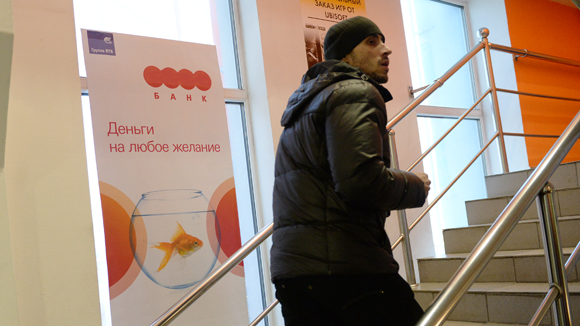Do you know how to make high-quality and eye-pleasing selfies? Get a loan
Subscribing to a public about travel and tourist photos can now help get a loan, a photo from a “drunk party” can lead to a bank refusal to lend.

Photo: Izvestia / Vladimir Suvorov
Getting a loan in many cases is not so easy - the bank evaluates the borrower's reliability many parameters, including place of work, income, availability of movable and immovable property. Now one more factor will come into play - the behavior of the borrower in social networks, they write"News". The National Bureau of Credit Histories (NBCH), together with the IT company Double Data, launched a special service called Social Attributes. The new system has already managed to prove itself: for example, subscribing a borrower to groups about network marketing or anti-collectors increases the risk of default on loans by 2-4 times. But subscribing to travel publicity increases the likelihood of a borrower paying a loan.
The average probability of non-repayment of the loan and interest on it for users on social networks is 7.4%. If there is a subscription to a “negative” (from the point of view of a financial organization) group, this probability almost doubles - up to 14.2%. Subscribing to several “negative” groups increases the likelihood of default on the loan up to 19.9%. The same indicator for an active traveler is only 3.55%. About 60% of borrowers in Russia use social networks.
“In my opinion, the future in risk management in retail lending is the introduction of innovative solutions aimed at reducing risks in lending to individuals. In modern conditions, the lender’s competitive advantages are the mandatory availability of a high level of manufacturability of all lending processes and the ability to process huge amounts of information, ”says NBKI General Director Alexander Vikulin.
Banks and MFIs have already begun to use the new system in their valuation models. “We conducted tests with the help of which we managed to get a positive economic effect from the use of this system. We already use this technology, it improves the efficiency of the credit decision-making process and gives additional leverage to manage credit risks, ”says Ekaterina Kazak, director of risk management for the online micro-credit service MoneyMan.
Soon, information from social networks may become key to assessing the reliability of the borrower, experts say. “Indeed, social networks can be a source of useful information about the borrower. For example, you can determine the presence of various deviations in the behavior of the borrower, evaluate the degree of his responsibility. Negative information from social networks when making a decision by the bank may “outweigh” the positive characteristics of the borrower obtained on the basis of other sources, ”said Maxim Osadchiy, head of the analytical department of BKF Bank.
For example, if a social network user’s account has many photos of drinking parties with his participation, then a loan to such a borrower may be refused even though all the documents are in order. But photos from foreign trips in large numbers are a plus for the potential borrower.

Photo: Izvestia / Vladimir Suvorov
Getting a loan in many cases is not so easy - the bank evaluates the borrower's reliability many parameters, including place of work, income, availability of movable and immovable property. Now one more factor will come into play - the behavior of the borrower in social networks, they write"News". The National Bureau of Credit Histories (NBCH), together with the IT company Double Data, launched a special service called Social Attributes. The new system has already managed to prove itself: for example, subscribing a borrower to groups about network marketing or anti-collectors increases the risk of default on loans by 2-4 times. But subscribing to travel publicity increases the likelihood of a borrower paying a loan.
The average probability of non-repayment of the loan and interest on it for users on social networks is 7.4%. If there is a subscription to a “negative” (from the point of view of a financial organization) group, this probability almost doubles - up to 14.2%. Subscribing to several “negative” groups increases the likelihood of default on the loan up to 19.9%. The same indicator for an active traveler is only 3.55%. About 60% of borrowers in Russia use social networks.
“In my opinion, the future in risk management in retail lending is the introduction of innovative solutions aimed at reducing risks in lending to individuals. In modern conditions, the lender’s competitive advantages are the mandatory availability of a high level of manufacturability of all lending processes and the ability to process huge amounts of information, ”says NBKI General Director Alexander Vikulin.
Banks and MFIs have already begun to use the new system in their valuation models. “We conducted tests with the help of which we managed to get a positive economic effect from the use of this system. We already use this technology, it improves the efficiency of the credit decision-making process and gives additional leverage to manage credit risks, ”says Ekaterina Kazak, director of risk management for the online micro-credit service MoneyMan.
Soon, information from social networks may become key to assessing the reliability of the borrower, experts say. “Indeed, social networks can be a source of useful information about the borrower. For example, you can determine the presence of various deviations in the behavior of the borrower, evaluate the degree of his responsibility. Negative information from social networks when making a decision by the bank may “outweigh” the positive characteristics of the borrower obtained on the basis of other sources, ”said Maxim Osadchiy, head of the analytical department of BKF Bank.
For example, if a social network user’s account has many photos of drinking parties with his participation, then a loan to such a borrower may be refused even though all the documents are in order. But photos from foreign trips in large numbers are a plus for the potential borrower.
